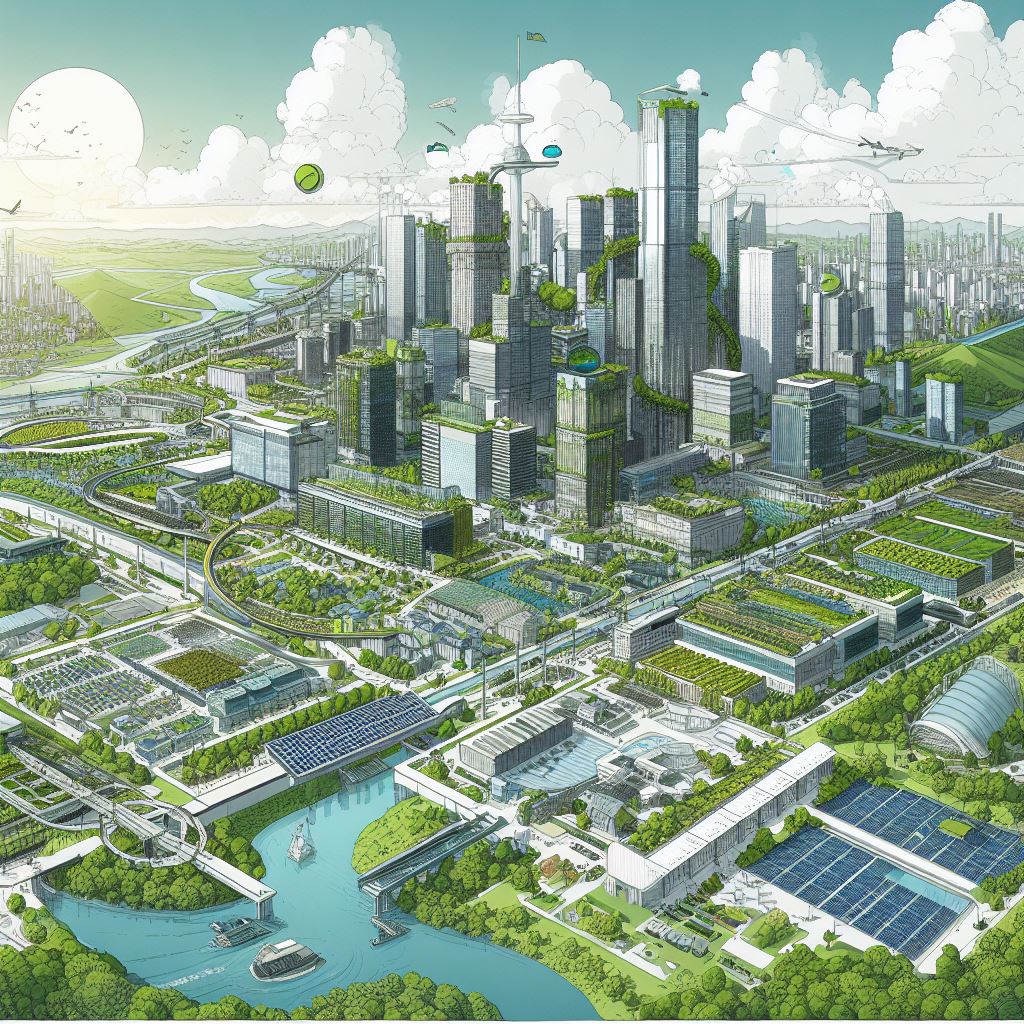
Civil Engineering's Role in Combating Climate Change
Introduction
Climate change, a global crisis, is reshaping the world, affecting ecosystems, human societies, and economies. The urgency to address and mitigate the impacts of climate change has never been more critical. Civil engineering, a discipline that designs and constructs the built environment, holds significant potential in combating climate change. This article explores the pivotal role of civil engineering in climate change mitigation, focusing on sustainable infrastructure, green building techniques, urban planning, and innovations for environmental sustainability.
Overview of Climate Change and its Global Implications
Climate change refers to long-term alterations in the Earth's typical weather patterns, primarily due to human activities like deforestation, burning fossil fuels, and industrial processes, leading to an increased concentration of greenhouse gases in the atmosphere. The implications of climate change are multifaceted, affecting sea levels, weather patterns, and global temperatures, leading to more frequent and severe weather events such as hurricanes, droughts, and heatwaves.
Direct and Indirect Impacts of Civil Engineering Projects
Civil engineering projects, from constructing buildings to developing infrastructure, have both direct and indirect impacts on the environment. Direct impacts include resource consumption, energy use, and emissions during construction, while indirect impacts relate to the long-term effects of the projects, such as urban heat islands and altered water flow patterns.
Sustainable Construction Materials and Techniques
Sustainable construction materials and eco-friendly construction techniques are at the forefront of civil engineering solutions for climate change. These materials and methods aim to reduce environmental impacts and enhance climate resilience.
Green Building Techniques in Civil Engineering
Green building techniques are integral to developing sustainable infrastructure. These techniques focus on energy efficiency, reducing waste, and utilizing renewable resources. Examples include the use of solar panels, green roofs, and rainwater harvesting systems.
Case Study: The Edge, Amsterdam
The Edge in Amsterdam is a prime example of a green building, utilizing sustainable construction materials and advanced technologies to optimize energy consumption and reduce carbon emissions. It incorporates features like LED lighting, energy-generating elevators, and a rainwater harvesting system, setting a benchmark in environmental design.
Role of Urban Planning in Reducing Carbon Footprint
Urban planning plays a crucial role in mitigating the impacts of climate change by promoting sustainable development and reducing carbon footprints. It focuses on designing urban spaces that are resilient, sustainable, and adaptable to changing climate conditions.
Promoting Green Spaces and Reducing Urban Heat Islands
Urban planning emphasizes the importance of green spaces in urban areas to combat the urban heat island effect, where urban regions experience higher temperatures than their rural surroundings due to human activities. Green spaces not only provide cooling effects but also improve air quality and biodiversity.
Example: Singapore’s Garden City Initiative
Singapore, known as the Garden City, exemplifies urban planning aimed at integrating green spaces within the urban fabric. The initiative focuses on planting trees and developing parks and green roofs, contributing to climate adaptation and enhancing the city's resilience to climate change impacts.
Innovations in Water Management and Flood Control
Changing climate patterns necessitate innovations in water management and flood control. Civil engineering innovations for environmental sustainability include the development of advanced drainage systems, flood barriers, and sustainable urban drainage systems (SUDS) to manage stormwater and reduce flood risks.
Case Study: The Thames Barrier
The Thames Barrier in London is a testament to innovative flood control, designed to protect the city from tidal surges and rising sea levels. It stands as a symbol of resilient infrastructure, demonstrating how civil engineering can address the challenges posed by climate change.

Importance of Collaboration in Climate Change Mitigation
Collaboration between civil engineers, environmental scientists, policymakers, and other stakeholders is vital for developing comprehensive strategies to combat climate change. This multidisciplinary approach ensures the incorporation of diverse perspectives and expertise in developing solutions that are holistic, sustainable, and effective.
Policy Integration and Stakeholder Engagement
- Policy Integration: Aligning civil engineering practices with environmental policies ensures the development of projects that are sustainable and compliant with environmental standards.
- Stakeholder Engagement: Involving communities, local authorities, and other stakeholders in the decision-making process fosters a sense of ownership and facilitates the implementation of climate-resilient projects.
Conclusion
Civil engineering holds immense potential in mitigating the impacts of climate change through the development of sustainable infrastructure, implementation of green building techniques, and innovations in environmental design and urban planning. The examples and case studies highlighted in this article illustrate the transformative power of civil engineering in addressing the global climate crisis.
The collaboration between various stakeholders, including environmental scientists, policymakers, and civil engineers, is crucial for developing holistic and sustainable solutions. By embracing sustainability and innovation, civil engineering can contribute significantly to building a resilient and sustainable future, demonstrating its pivotal role in combating climate change.
References
- Intergovernmental Panel on Climate Change (IPCC). (2021). Climate Change 2021: The Physical Science Basis.
- World Green Building Council. (2022). Green Building Standards and Certification Systems.
- Urban Redevelopment Authority (URA). (2023). Singapore’s Green Spaces: A Model for Urban Development.
- The Environment Agency. (2022). The Thames Barrier: Protecting London from Tidal Surges.
This article aims to serve as an informative and educational resource for civil engineers and professionals, environmentalists and climate change advocates, urban planners and architects, policymakers and government officials, and students and academics in related fields, shedding light on the significant role of civil engineering in climate change mitigation.
Engineering Topics Civil Engineering




